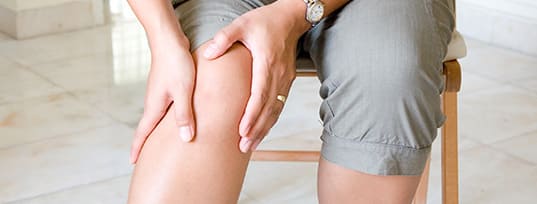Most often, this type of knee pain resolves with exercises: core + legs + activity modification.
PATELLO-FEMORAL DISEASE
Many people experience knee cap pain (patello-femoral disease) at sometime in their lives. Most often, this type of knee pain resolves over 2-3 months with exercises: core (sit ups, push ups, planks, bridges) + legs + activity modification (not all bodies are meant to run and jump – over and over every day). Knee cap pain people have a normal or mostly normal knee exam, X-rays and MRI. Exercise (physical therapy) and activity modification is the cornerstone of treatment. Additionally knee bracing, shoe orthotics, and tincture of time are used to treat these knees. Try these suggestions, wait a few months or see your primary care physician prior to seeking treatment from a knee specialist.

A small group of patients have more serious knee cap pain because of joint surface damage either behind the knee cap, in the groove the knee cap tracks, or on both surfaces. Typical causes are recurrent patella dislocation, anatomic imperfections (born this way) or repetitive kneeling or jumping activities. Symptoms include pain with stairs, arising from a chair, sitting at a movie, or hiking. People have a feeling of reflex buckling of the knee, catching of the knee and popping as the knee moves from bent to straight. There may have been previous injury with knee cap dislocation. First line treatment is the same as for “normal” patients, as many Knee Cap pain patients are good at tolerating their symptoms.
When non-surgical means fail (McConnell taping, bracing, exercising, and activity modification) then one should consider surgical options. Most surgical treatments improve patients but rarely return a person “back to normal”.
MRI and Arthroscopy are important tool for evaluation of the extent of patellofemoral chondral disease.
In Office PRP (platelet rich plasma) injection may be beneficial in patients younger than 50 with patellofemoral chondropathy (localized defect in joint surface).
Fulkerson Osteotomy (AMZ) alters patellofemoral mechanics and is effective for people with an abnormal Q angle and patellar chondral damage in specific locations with the knee otherwise healthy.
DeNovo NT, Hylofast, OATS, or Autologous Chondrocyte Implantation (ACI) is used alone or in combination with other strategies for full thickness joint surface damage on the patella or in the trochlear groove.
Eliminate the middleman - By choosing your surgeon and paying his professional fee directly you deal directly with your care provider, take treatment decisions out of the hands of a third party, and eliminate the interference of your access to care from an insurance company. Bring back the Doctor: Patient relationship!
WATCH RELATED VIDEOS
Makoplasty Robotic Assisted Knee Surgery Videos
Ready to Schedule a Consultation?
Get started today by completing our request form. If you have additional questions, contact us by phone or e-mail, and our trained staff will assist you to the best of our ability or have Dr. Tarlow address your question when appropriate.
